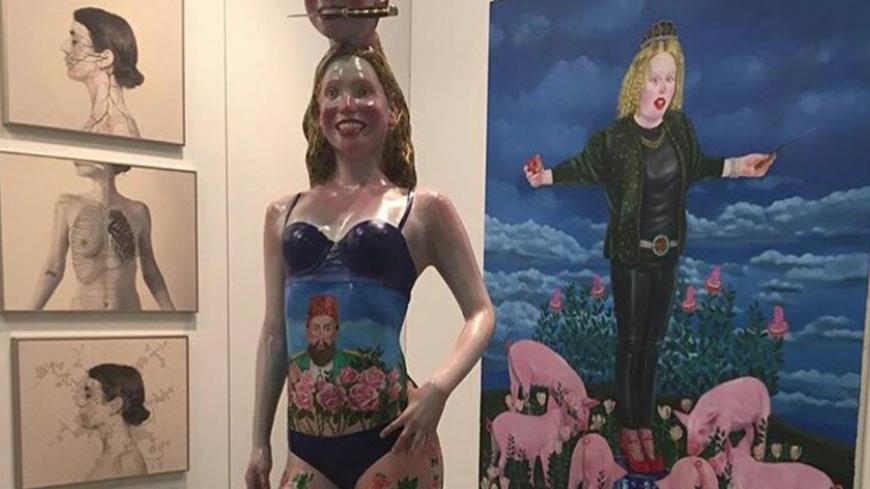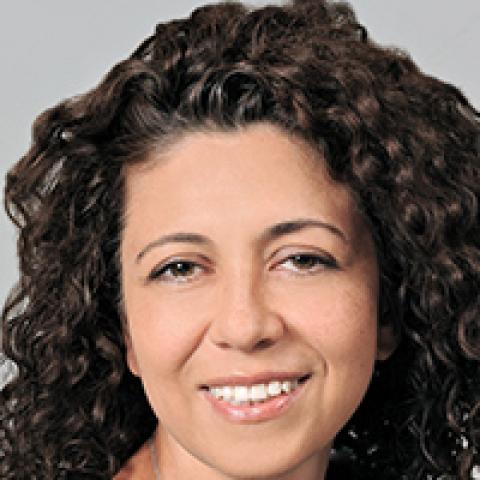Amid all of Turkey's current controversies — the attempted coup, the subsequent purge of thousands of alleged conspirators, the war in Syria, to name just a few — Istanbul's “art critics" are creating their own turmoil.
On Nov. 3, a group of angry young Islamists chanting "Allahu Akbar" showed up at the annual Contemporary Istanbul art exhibit demanding that a sculpture be removed from the gallery. The statue that caused such an uproar is a sculpture of a woman wearing a bathing suit. Painted on her belly is a man wearing a fez and a military uniform with his tongue sticking out and curved upward. This man is Ottoman Sultan Abdulhamid II. Abdulhamid Han, as he is referred to among Turkish Islamists, reigned for 33 years and is the most revered sultan.
During a show that lasted only four days, the statue was removed, put back up the next day and finally removed again at the request of the artist, who told the press he was concerned about the reaction to his work. Considering the tense times in the country, artist Ali Elmaci decided it was better not to add to the unease.
Yet several news outlets used inflammatory descriptions of the incident, such as “Bigots attack art” and “Under the guise of political sensitivity these actions resembled the Paris attacks of the Islamic State.” Some even said the exhibit had been raided. On social media, both sides were vocal. While the secularists condemned the Islamists' attack on the art, those who were offended by the statue questioned how it could be considered art. On Twitter, there were comments such as “What kind of art is this? How can one ridicule [his] own history and leaders?" Others said things like, “If it was [Mustafa] Ataturk painted there [on the belly of the sculpture], hell would break lose. When it is Abdulhamid, it is of course called art.”
Al-Monitor interviewed different Islamist groups about their perception of Sultan Abdulhamid II. Most of the Islamists emphasized that Abdulhamid Han was first and foremost a caliph and that it was not appropriate to display him in that manner. One prominent historian who asked not to be named told Al-Monitor, “In this case and in other protests like this, we must ask, are all who chant 'Allahu Akbar' violent and dangerous, or terrorists, for that matter? Then to answer your question, Abdulhamid Han is important because he was known as a pious sultan, a source of pride for Muslims in a challenging time during his reign.”`
The Istanbul Art Snob blogger, who asked that her name not be released, told Al-Monitor, “The sculpture is the first sculpture work of the artist; he normally works oil on canvas. And this sculpture is part of his ‘I can't reciprocate your feelings Osman’ series. In this series, Osman is referred to as the leader of the neo-Ottoman ideology. [Elmaci] used Abdulhamid II as a symbol here, and the face of the sultan is actually painted as the artist himself, especially the eyes. So here it is the sultan as well as the artist himself. As I said, this is due to the fact that the whole series of works are under the same concept of neo-Ottoman ideology.”
It is also crucial to note that the art blogger had interviewed several members of the art community who rallied around the artist and stood against the protest. For example, X-ist Gallery owner Daryo Beskinazi commented, “I think that all there is to say has already been said about this horrible and unacceptable attack. Fascism has found a way to enter our tall walls, which we thought were safe and sacred. Ignorance will always remain as ignorance wherever you go. I disapprove of the whole thing without a doubt!”
The blogger also told Al-Monitor that, although rare, negative public outbursts like this do happen in Turkey.
“There was an incident a few years ago at an exhibition at Tuyap. As the public does not follow contemporary art so much in Turkey — and neither does the government, unless you stick a finger in their eye — they do not know what the art world is doing, and so unless it is very visible, the [artists'] hidden protest in the artworks never get to be seen or censored,” she said.
So what spurred this protest? Al-Monitor interviewed Huseyin Terzi, the chairman of the Erbakan Foundation’s Istanbul bureau. Erbakan Foundation was the main group that voiced disapproval of the artwork. Terzi first explained that Erbakan members have a reputation for leading marches, sometimes with hundreds of thousands of people, even almost a million people, without injury or any sort of aggression. Terzi confirmed that, in this instance as well, there was no violence or even the threat of violence against anyone or the property of the galleries.
He said, “We learned about the statue from the news online that was advertising Contemporary Istanbul. Our youth branch attended the fair to express their thoughts and concerns about the artifact. Just like everyone, each one of our members entered the fair after buying a ticket. They approached the gallery that was displaying the statue and asked the artist and other people in charge, ‘What is the purpose of displaying a caliph of Muslims with his tongue sticking out on the belly of a naked statue?’ The answer they received was only, ‘It is art.’ Then our members explained to them that this is offensive to Abdulhamid Han and his people and, therefore, it should be not displayed. A day after, we learned that the artist agreed to pull his work out of the fair, so the issue is closed for us.”
According to Terzi, the artist has not been able to explain the purpose and the meaning of portraying Abdulhamid Han with his tongue sticking out. He said, “We view this kind of a display as offensive to the Turkish nation and Muslims everywhere. Art should not be used to normalize ridiculing sacred values, insulting individuals and ignoring cultural dynamics.”
At the end, Contemporary Istanbul was completed successfully; according to SanatKaravani.com, 90,000 people attended.
Still, questioning the purpose of a work of art or why it may be offensive for some sections of society while others simply do not care, in itself may be controversial. Arguing over whether art is respectful of different political, cultural and religious sensitivities is rubbing salt into the deep wounds and divisions of Turkish society. In Erdogan’s Turkey, art remains a risky and contested pursuit.







